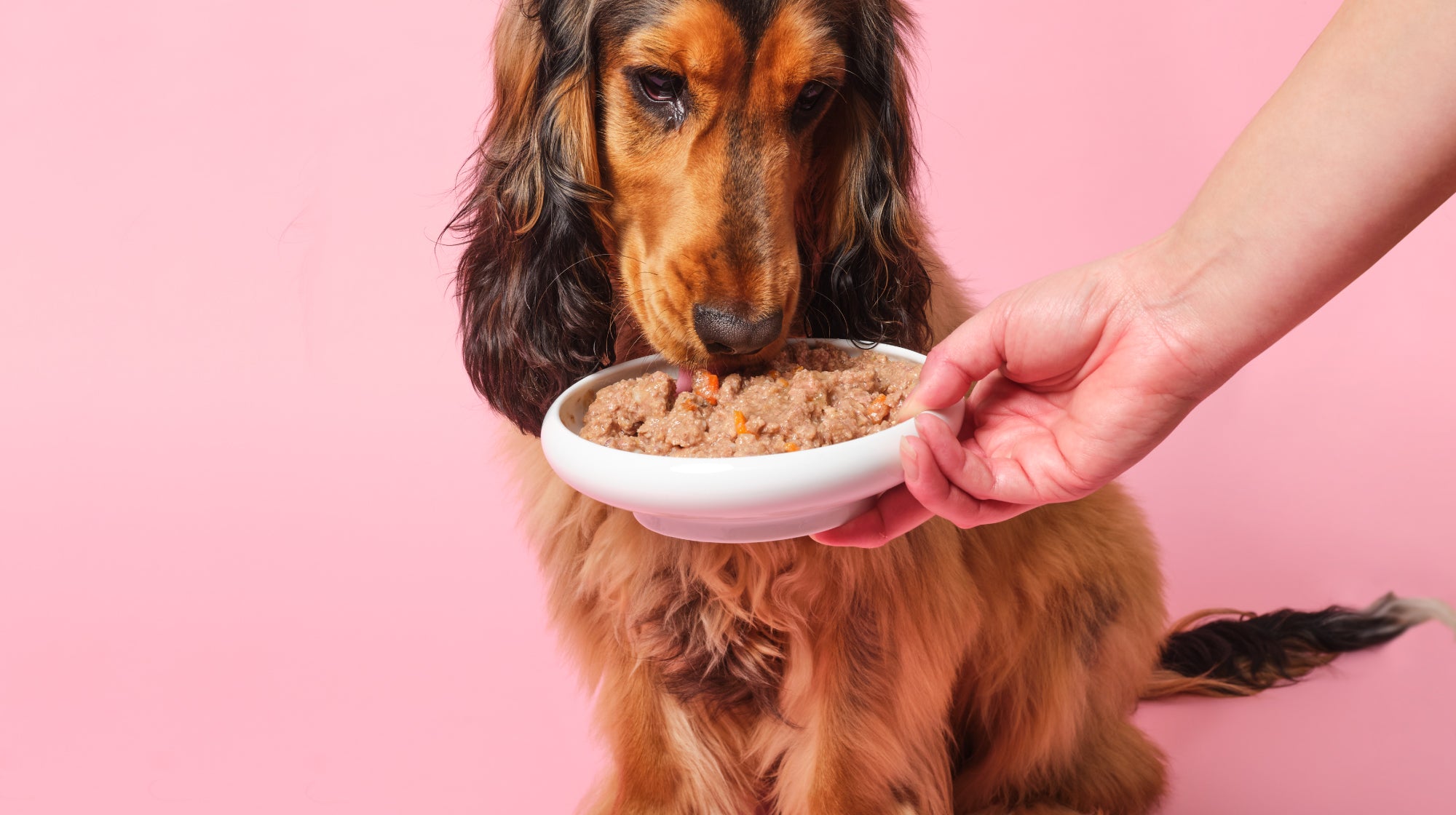FREE UK DELIVERY ON ORDERS OVER £39.99
Fibre is one of the most necessary nutrients for dogs. It’s great for weight management, aids healthy digestion and keeps toilet time regular and predictable.
A dog’s digestive system is more sensitive than ours, but they need fibre in their diet for the same reasons. So, how do you know if your dog is getting enough fibre, and what high-fibre foods are good for dogs? Could your dog be suffering from a lack of fibre in their diet?
If you’re feeling stuck on how to get your dog more fibre, we’ve got you. Read on for the full lowdown on fibre-rich foods for dogs and how they keep your canine’s gut moving.
Firstly, let’s start by introducing this hard-working nutrient. Fibre is a type of carbohydrate that you receive from food, but the body can’t fully digest it. This is a good thing, however, as fibre has an important role in travelling all the way through the digestive system and ensuring healthy gut activity. There are two types of fibre: soluble and insoluble, which both have different functions (more on that later).
You could say fibre is the Operations Manager of a dog’s digestive system, keeping everything steady, balanced and running smoothly. It’s an essential component of a healthy, well-balanced diet for dogs. Here’s why fibre is so great for your dog:

The two types of fibre and their functions include:
It’s important for your dog to get both types of fibre through the food they eat.
Fibre is found in plant-based foods, and the good news is that there is a wide variety of fibre-rich goodies that are dog-friendly and easy to include in your dog’s meals.
Be careful not to overfeed these to your pooch, and get to know how well they digest legumes before piling up their plate.

Dog-friendly fibre supplements and specialist high-fibre dog foods pack a lot of tasty, fibre-rich ingredients into their recipes.
Always ask your vet before trying a new supplement in your dog’s diet or opting for a specialist high-fibre dog food. They can advise you on the best tweaks to make based on your dog’s breed, age and health level.
Common fibre-packed ingredients used in foods and supplements often include:
If you don’t feed your dog enough fibre, long-term, not only will they likely show some or all of the above symptoms, they will be at risk of more serious conditions like
Their reduced overall health will be obvious by their low mood and increased lethargy, and will show through their dull skin and coat.
If you are trying your utmost to feed your dog fibre-rich foods as part of a well-balanced, nutritious diet, but they’re still having issues with diarrhoea, constipation or just digestion in general, it could be worth taking your dog to the vets for a check-up. They can also recommend some high-fibre dog foods that have been shown to work.
If you want to use fibre-rich foods to help with weight management in your pooch, you can start by assessing how many fibre-rich foods they’re currently eating and if their diet is lacking. High-fibre foods could include fruits and veggies like apple, pear, banana, pumpkin, broccoli, sweet potato and berries; or you could add legumes such as lentils and black beans, or seeds like flaxseeds or chia seeds. Also, go to your vet to ask them about whether a specialist high-fibre dog food could be helpful.
While fibre doesn’t directly prevent cancer, it contributes towards a healthy gut and overall digestive health, which boosts a dog’s immune system and helps to reduce the likelihood of your pooch getting cancer and other serious illnesses. If your dog has cancer, a well-balanced diet rich in fibre, proteins and healthy fats can help support them through treatment, but should never be used as the only remedy.
Yes - high-fibre dog food is a good option for dogs with diabetes, because fibres help slow glucose absorption and prevent blood sugar spikes. High-fibre dog food might include healthful ingredients such as spinach and other leafy greens, broccoli and pumpkin (which many dogs love!).
If your dog gets anal gland problems, foods naturally high in fibre are the best way to naturally ease this. Fibre improves the firmness of stools and adds bulk, meaning the anal glands are naturally cleared each time they poop. If your dog has been bum-scooting a lot or seems in discomfort, consider whether a lack of fibre could be the culprit.
Yes - they can. Confusingly, the symptoms of too much fibre are similar to if they’re not getting enough. Such as constipation, diarrhoea and general toilet issues, as well as tummy pain and lethargy. One of the opposing factors is hunger levels - whereas a fibre-deficient dog may be extra hungry all the time, a dog eating too much fibre won’t have much of an appetite. Keep an eye on your dog when trying to boost their fibre, as if they show the above symptoms, you may be going overboard. Go to a vet if you’re not sure.
If you’re looking to get more fibre into your dog’s diet, Pooch & Mutt’s high-fibre dog food recipes could be just the ticket to get things moving. Packed with delicious, fibre-rich ingredients like sweet potato, pea protein, pumpkin, psyllium husk and seeds to have your pooch feeling regular and balanced.
Never miss a treat!
Subscribe to our newsletter and get blog articles amongst other treats delivered to your inbox

Comments (0)
Leave a comment